Soul Hackers 2 on PS5
Soul Hackers 2 stands in an interesting position. While it is part of the long-standing Shin Megami Tensei franchise, it is also a brand new sequel to a 25-year-old game. The biggest change between the two games is that while the original Devil Summoner: Soul Hackers was a first-person dungeon crawler, Soul Hackers 2 changes things to be third-person. While I will admit to never playing the original Soul Hackers, it’s certainly obvious there is something here for both Shin Megami Tensei fans and those who loved the original title.
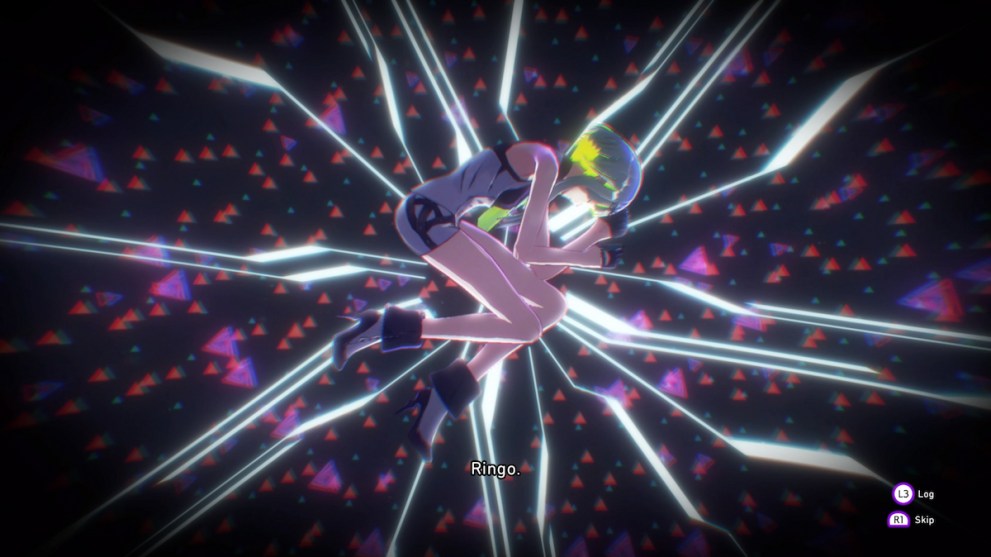
Soul Hackers 2 starts sometime in the future as the super intelligent hivemind Aion foretells the end of the world. In order to prevent this, Aion creates two androids to be as human as possible, Ringo and Figue. Ringo and Figue are tasked with protecting Arrow and Ichiro Onda, two citizens whose deaths are determined to kick off the chain of events that bring about the destruction of the world.
Ringo is tasked with tracking down Arrow while Figue is sent after Ichiro Onda. Both girls find their designated person but are too late in both cases. Ringo, not willing to take a failure right out of the gate, Soul Hacks into Arrow. This process involves diving into the very soul of a person and rewriting it. Soul Hacking is even capable of resurrecting the dead.
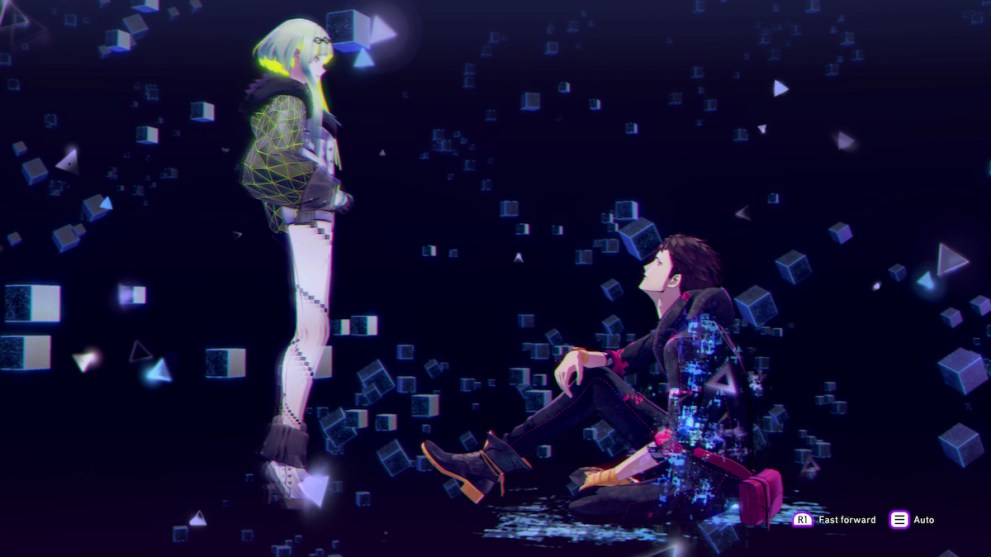
Arrow’s revival leads to fellow party members Milady (Mill-uh-dee) and Saizo, as well as information about the covenants. The covenants are five special pieces of power that inhabit people and have been “passed down through generations.”
Having just one covenant can give the holder special abilities, and gathering all five grants the ability to call forth the “Great One” and remake the world. The game’s antagonist, an enigmatic figure named Iron Mask, is trying to gather the covenants by murdering covenant holders. At the start of the game, he is already in control of two.
Arrow, Milady, and Saizo are all Devil Summoners, meaning they can see and make contracts with demons for the purposes of fighting. Demons are used purely as equipment, which feels slightly annoying, considering every battle against humans involves them being able to use their demons. This also feels like it wastes the cool designs of the game’s demons.
The majority of the game takes place in sprawling dungeons that range from skyscrapers to mindscapes. Once inside any dungeon, the demons you have on hand will go on “Demon Recon” where they spread out across the whole dungeon. Finding them means you will be guaranteed to be given things like items, a quick HP/MP heal, money, or be introduced to demons willing to negotiate and join the party.
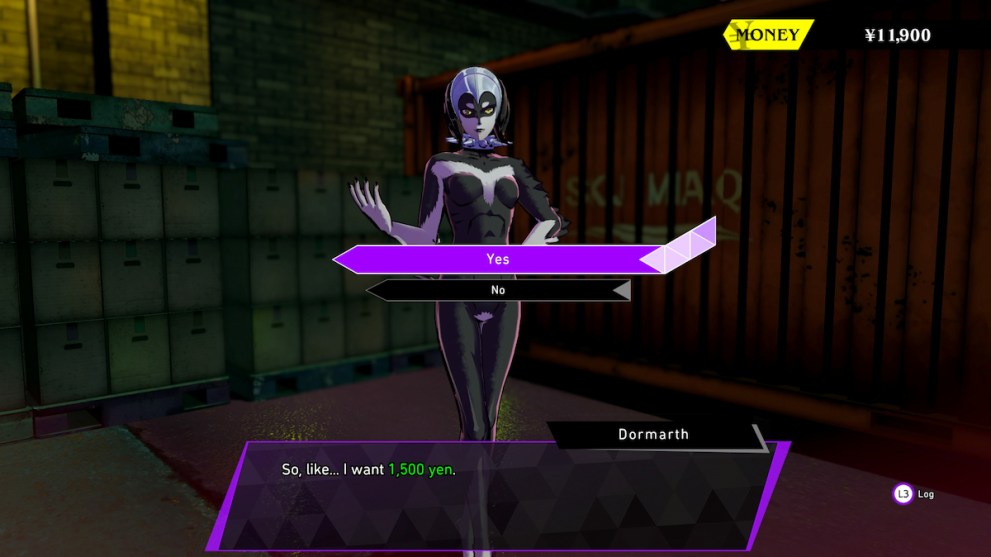
While never knowing when I’d get the next demon or what it would be added a fun almost scavenger hunt aspect, but it also felt way too simple. Assuming you are proper level for a demon to join you, they really only ever want a basic item, money, or half of your HP/MP. There’s not even a trick outside of choosing a Yes/No answer to give them whatever they want. Considering I never had a single problem with money and there’s an instant and free dungeon exit ability, there was never any reason to decline.
Outside of the Demon Recon mechanic giving you a reason to explore, dungeons feel largely empty. There are gates for fast travel, but they certainly aren’t all that frequent, typically only at the beginning and end, with one in the middle on larger dungeons. Most dungeons are more than one level, so this pattern repeats. Though, there is something quite satisfying about filling out the maps shown on screen which kept me doing it even when I certainly didn’t need to.
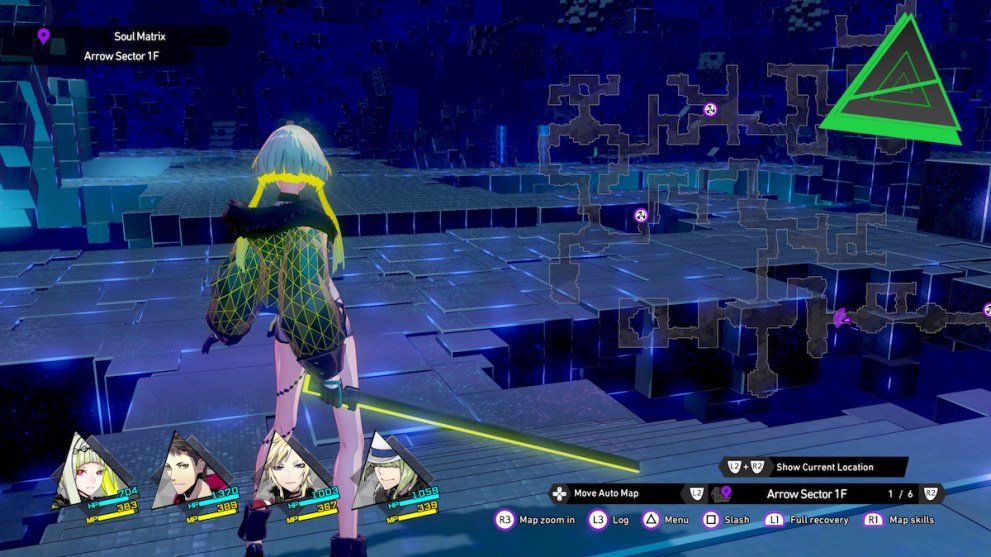
When not tackling dungeons for story purposes, there isn’t a lot of side content. Throughout the story, new Requests are unlocked. A large majority of these are fetch quests or completed by finding the one specific enemy in a dungeon to fight. There aren’t any indicators on the map to lead to where to continue/complete requests, meaning you have to search through the dungeon yourself once again. On the larger dungeons, this is nothing more than an annoying chore and the rewards are rarely actually worth it.
The other non-story activity is visiting the special Axis area and running through the Soul Matrix for one of the three characters. These are dungeons that help unlock both higher-level demon fusions and passive character abilities. There is also the chance to learn in-dungeon usage abilities for Ringo such as a temporary sprint or a way to keep low-level enemies from spawning to avoid having to dodge encounters.
Unlocking deeper levels in each Soul Matrix requires raising your Soul Level with each character, which is essentially just affinity levels. These can be raised by picking a dialogue option that corresponds to a certain character when given the choice or by attending hangout events at the Bar Heidrun you can visit at any point. New hangout events are unlocked by finding special items or just getting through the story. The events themselves are just a bit of unvoiced dialogue providing some insight into the characters and bear any true weight in the game.
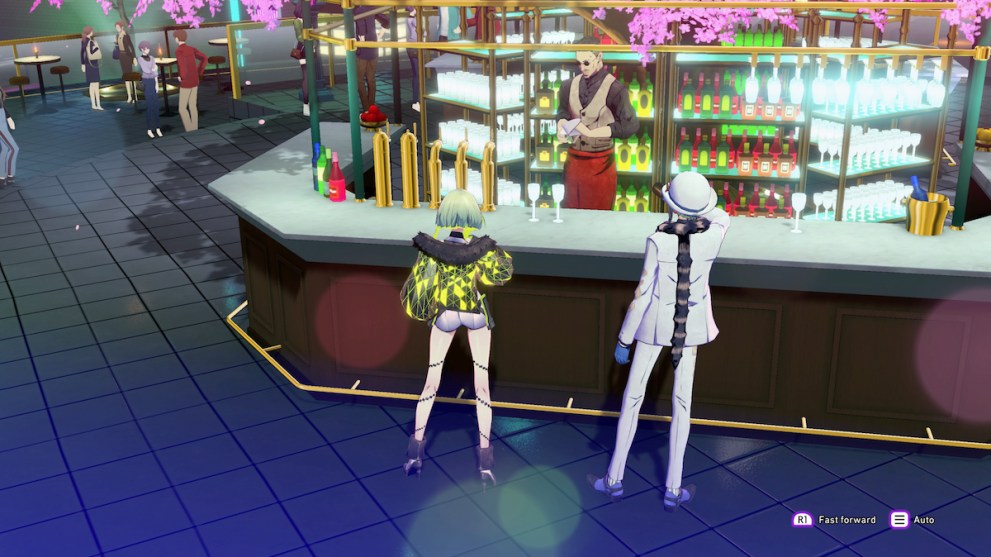
Demon Fusion is one of the best motivations for negotiating with demons, while it’s nice to get stronger, fusing lets you carry over abilities that you have gained by leveling up your demons. Simply equipping a new demon might entirely drop the tough elemental skill a previous demon had. Just about all fusion is a simple two demons into one new one. However, those special demons unlocked through the Soul Matrix typically require three or more. They are a little tricky as you both need to know every demon that it takes to create them, as well as be at the proper level to perform the “Special Fusion” to get them.
Soul Hackers 2 uses a Demon Compendium feature to let you pay to summon previously gained demons but also register a demon whenever you want to preserve it at that point. The registration is incredibly nice because it guarantees you won’t have to try to fuse with a brand new demon and gives a few more attacks to carry over.
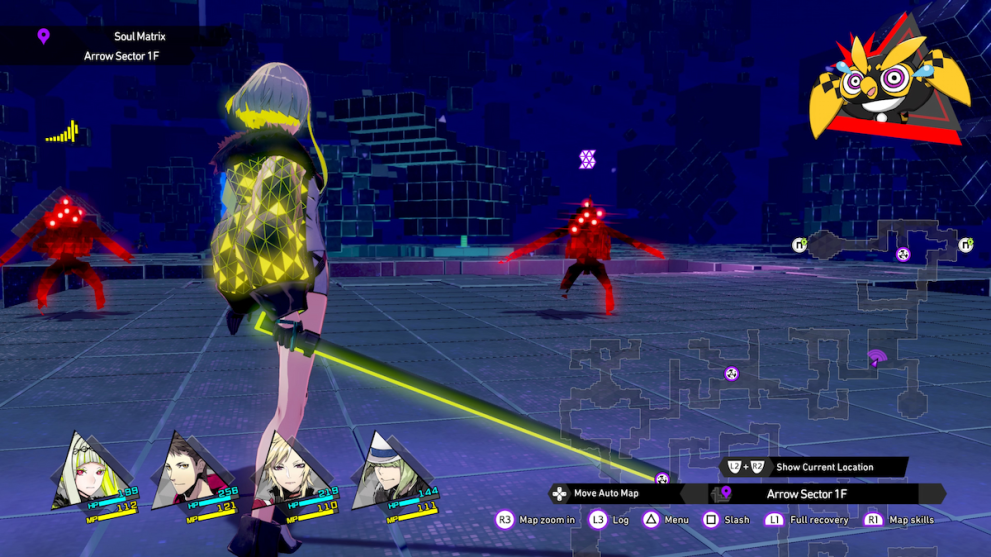
Speaking of attacks, most combat (outside of scripted events) in Soul Hackers 2 is initiated by coming in contact with the humanoid enemies. They only come in three colors/varieties so you always know what you’re going to be facing. Red enemies are the base type. Yellow enemies are rare and will give special items upon victory assuming they are beaten before they escape. The third type is the purple, they are the risky enemies because they are guaranteed to be quite a few levels above the base red type.
Fights themselves are entirely turn-based. However, it’s not staggered between the player team and the opposition. Instead, your whole party acts, and then it is the enemy’s turn situation. Due to this, it’s extraordinarily easy to wipe opposing demons if you have the right movies. There’s an extra combat feature called the Sabbath that adds demons to a stack to unleash extra damage. They are also the only time you can actually see your demons during fights.
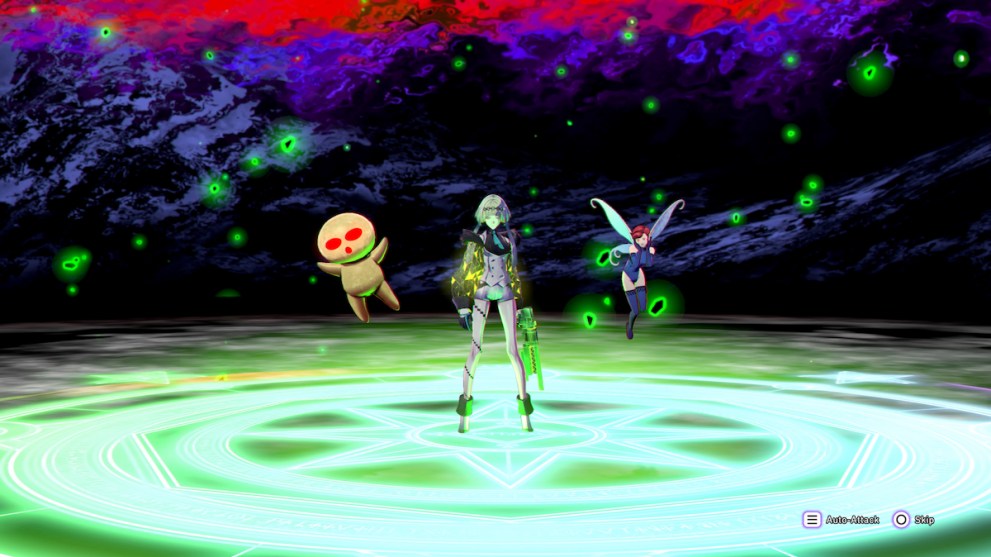
Building up the Sabbath stacks requires figuring out and hitting enemy weak points that you typically have to discover completely for yourself through trial and error. This is where the game becomes delightfully strategic. When facing a new demon with an entirely unknown elemental affinity, it’s all trial and error. But, even with that, I still found myself limiting who took the test shots. This was by far the best thing to play around with in the whole game and it kept combat fun without ever running dry.
Base slash and gun attacks are typically neutral and will do limited damage, and it’s rare an enemy has a weakness or strength against them. However, using elemental attacks can be risky as they can either be absorbed by the enemy to regenerate their HP, or the damage can be bounced back to the attacking member of your party.
The story of Soul Hackers 2 is, by all means, the biggest highlight for the game. That’s not simply because the game is rather content light in every other area, either. Getting to experience Ringo discover the depths of humanity while navigating a strange new world was fun. Every character feels very well written with their own depth. The nicely strategic combat with having to judge risk and rewards and play with weaknesses truly made me never shy away from combat as I never got sick of fighting.
- Fun, strategic combat.
- Great story.
- Huge number of demons.
- Demon fusion is a truly fun mechanic to play around with.
- The game is kind of empty outside of story progression.
- Dungeons feel far too empty for how big they can be.
- Side quests are frequently far too shallow.

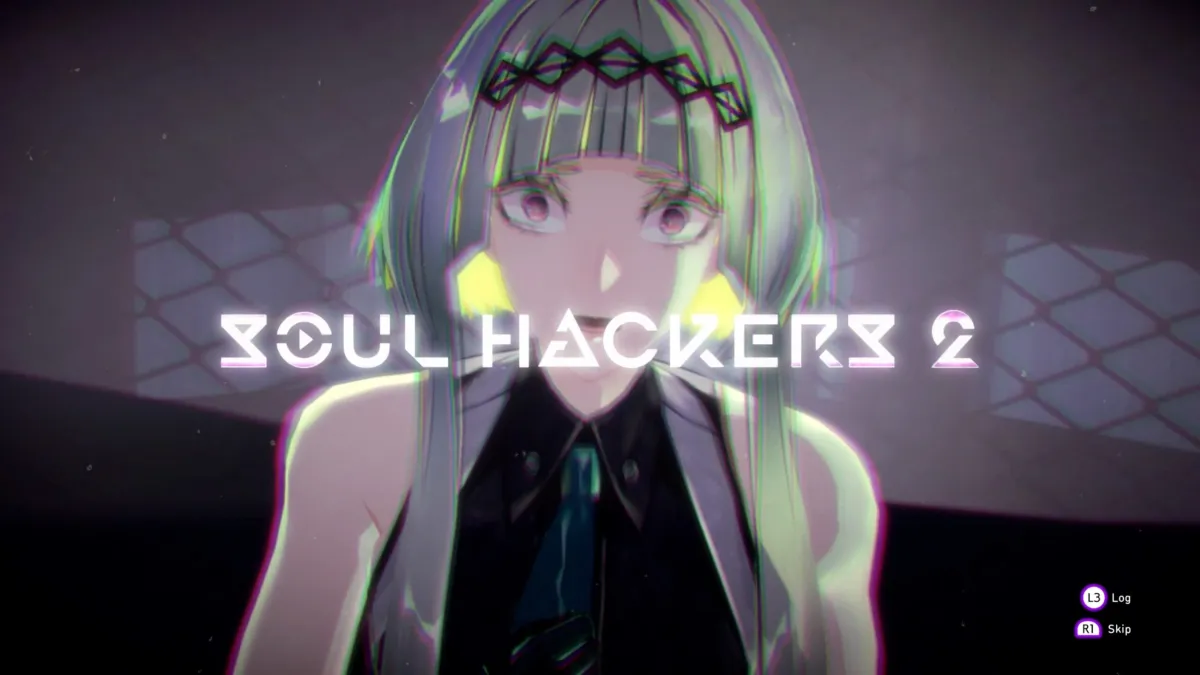



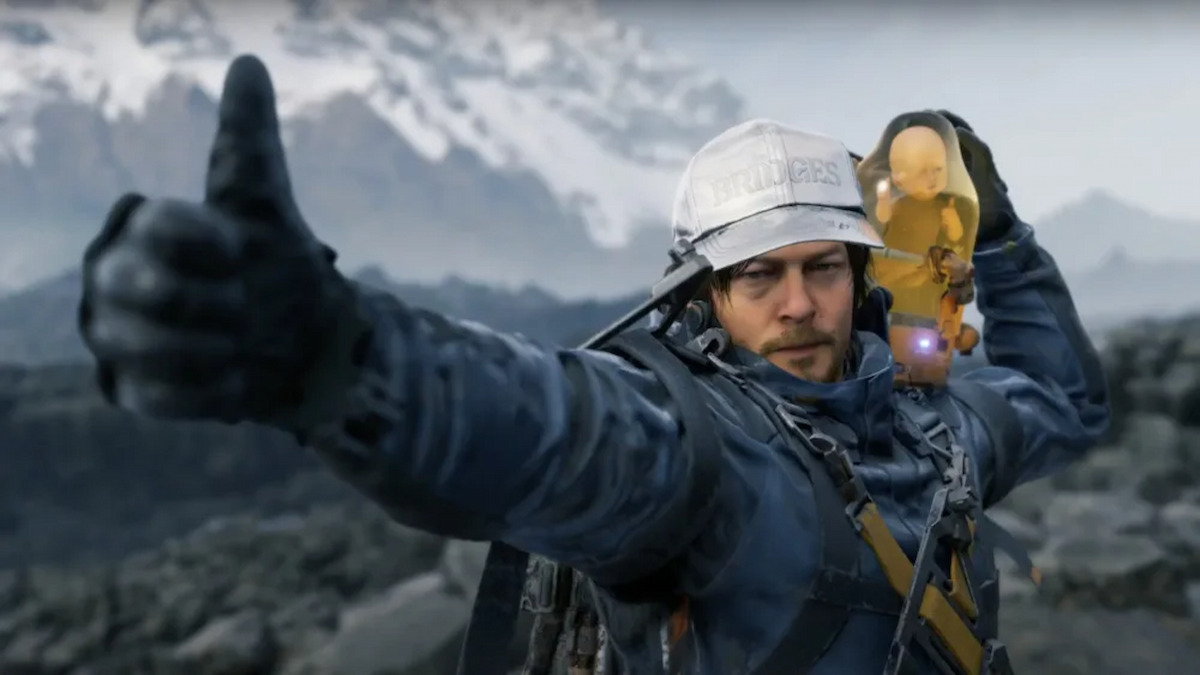
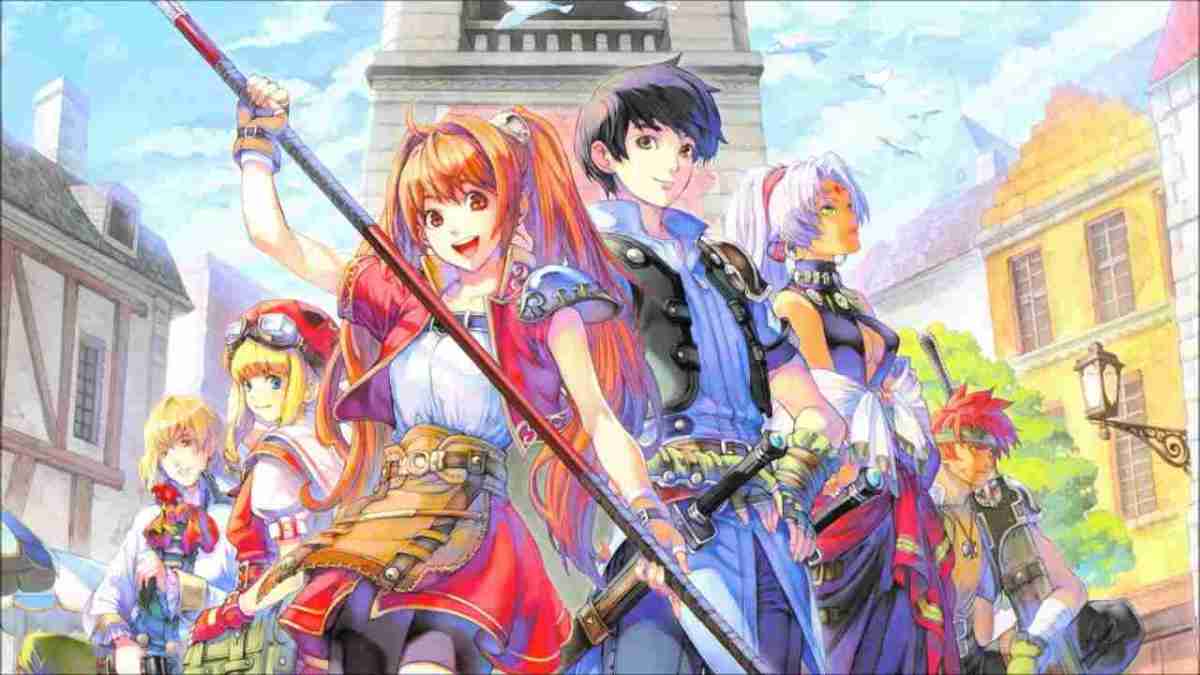
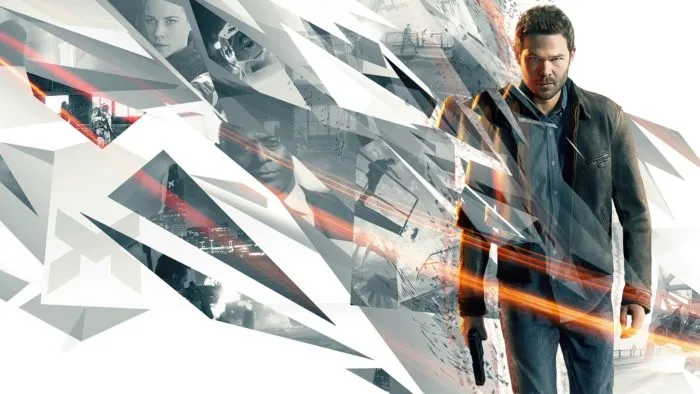
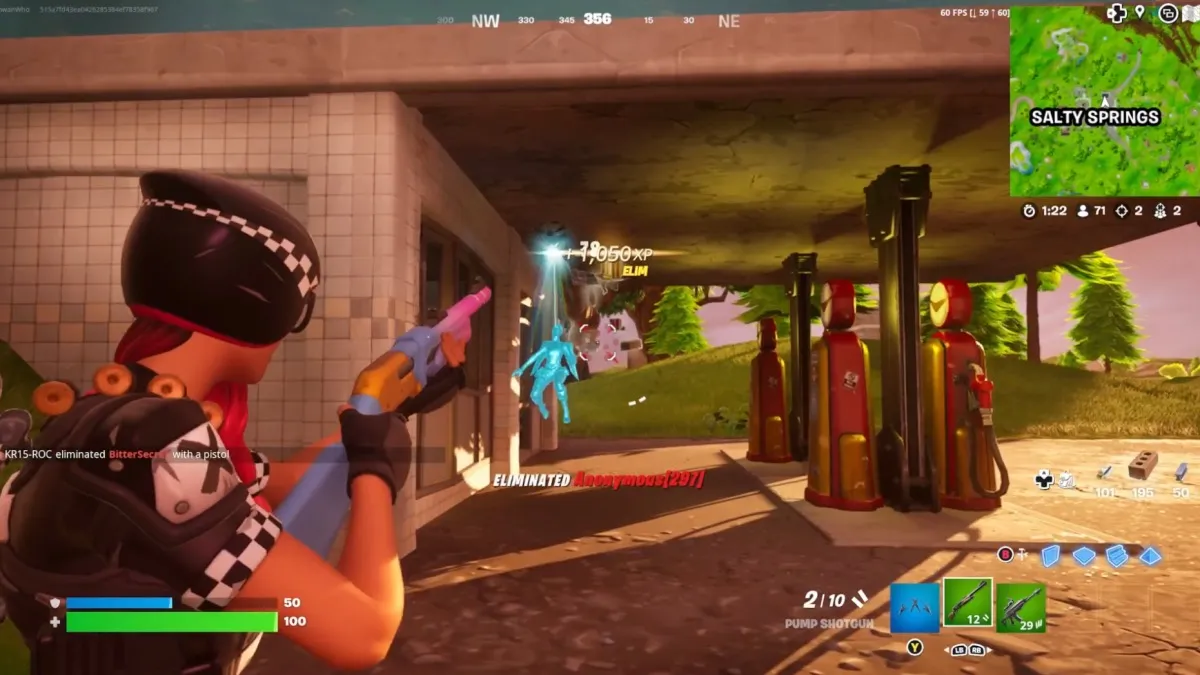
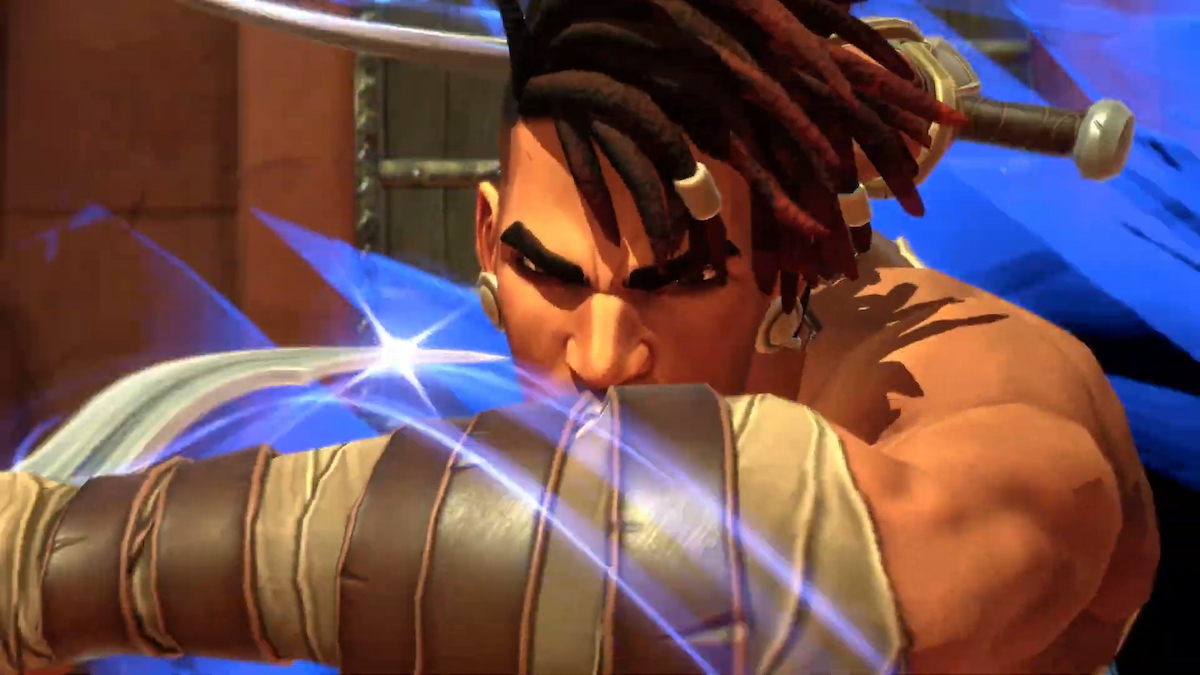
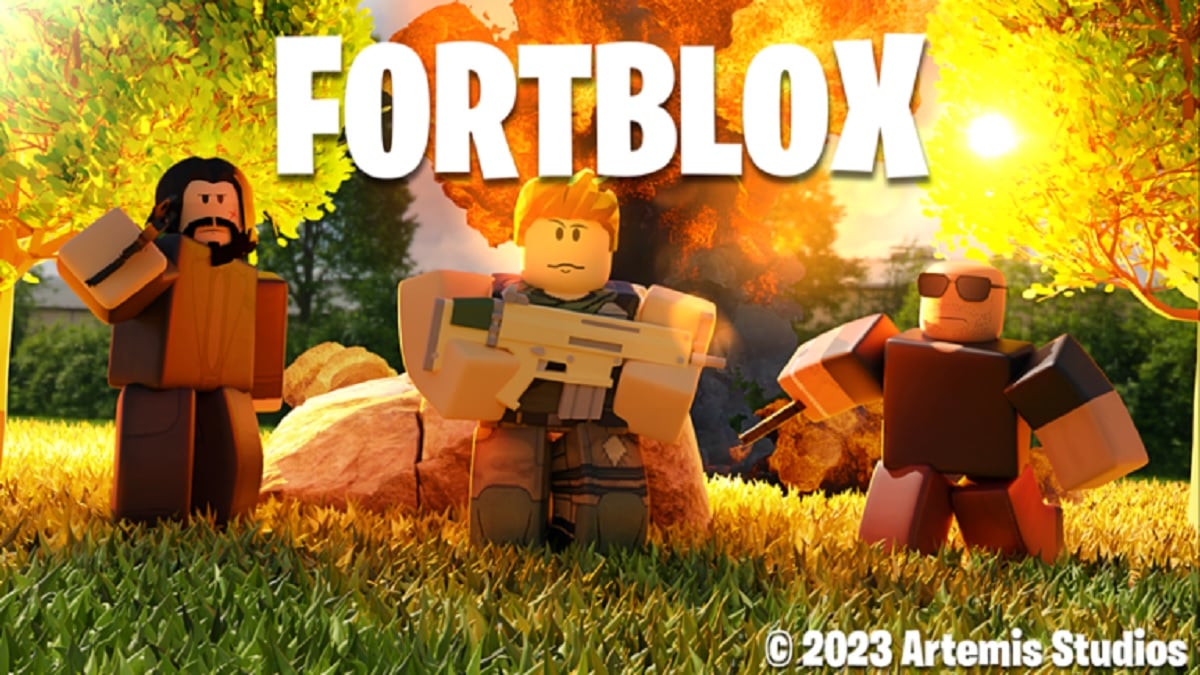

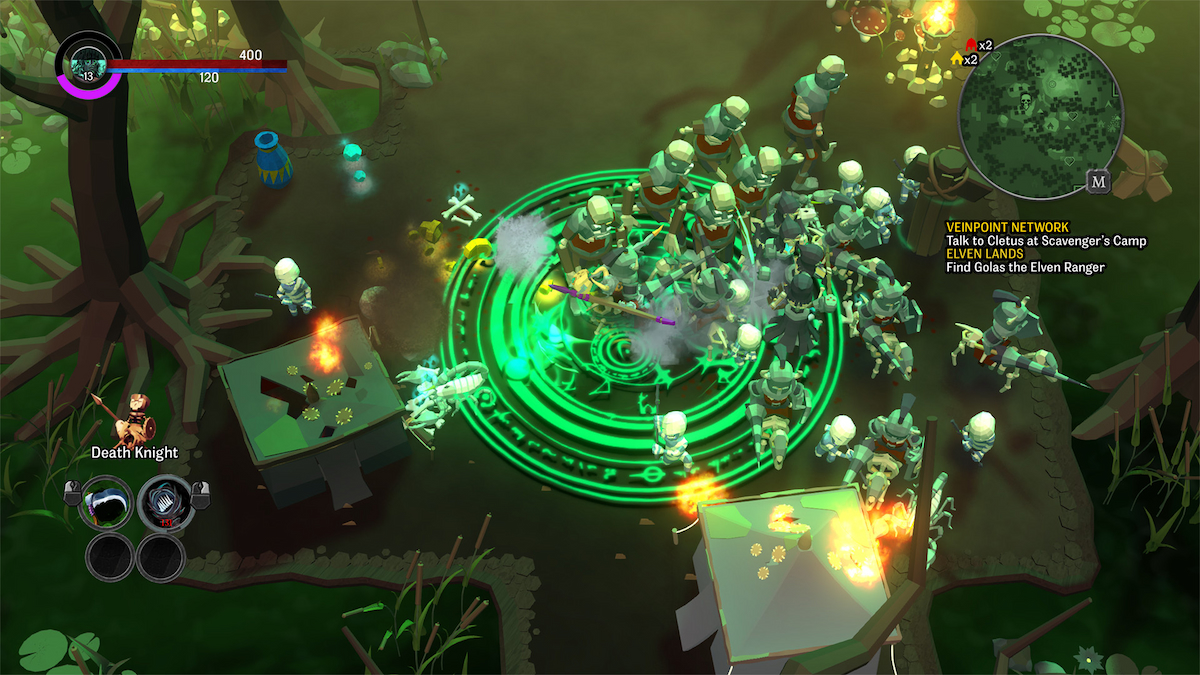
Updated: Aug 11, 2022 08:35 pm